Asustek Computer Inc Maximus Vii Hero Review - Performance
Asus Maximus VIII Hero – UEFI interface and Software
By default, the Asus Maximus VIII Hero'south UEFI interface is prepare to its "EZ" manner, which hides most of the complicated settings that you'll need to overclock this motherboard.
Instead, it gives a quick overview of the system and lets you choose the kicking device, setup the Q-fan control and switch between power saving, normal and overclocked modes. Exterior of that you'll take to jump into the Advanced manner, which is dwelling to simply about every setting you could promise for.
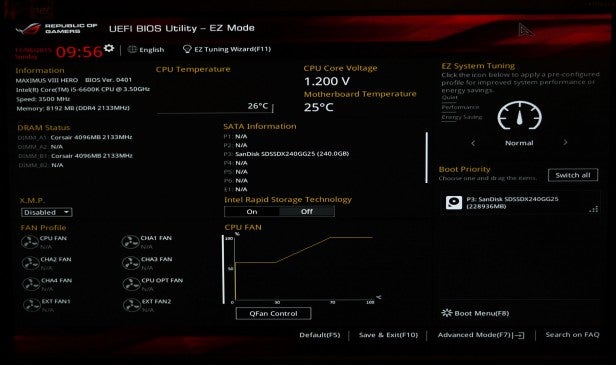
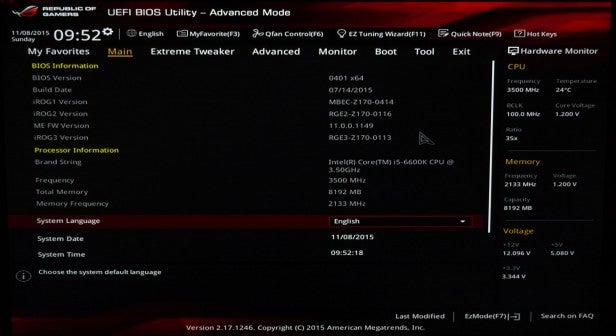
On the whole, the UEFI is easy to figure out – although it isn't entirely flawless in its layout. For example, the EZ interface was missing some of the settings I'd accept thought useful for novices notwithstanding included more esoteric items such as Intel Rapid Storage.
The overall expect and feel is also rather as well reminiscent of an old, cluttered BIOS rather than a mod, mouse-friendly UI; there's an over-reliance on text over icons. In this regard, MSI has done a far meliorate chore of embracing the potential of UEFI.
As for software, Asus provides a host of programs to take full advantage of everything the VIII Hero has to offer – and most of them work pretty well.
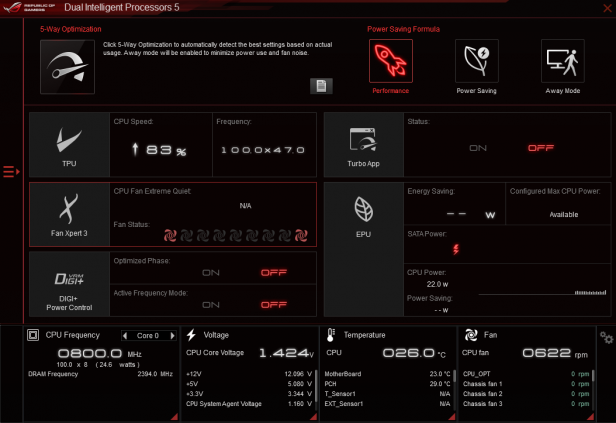
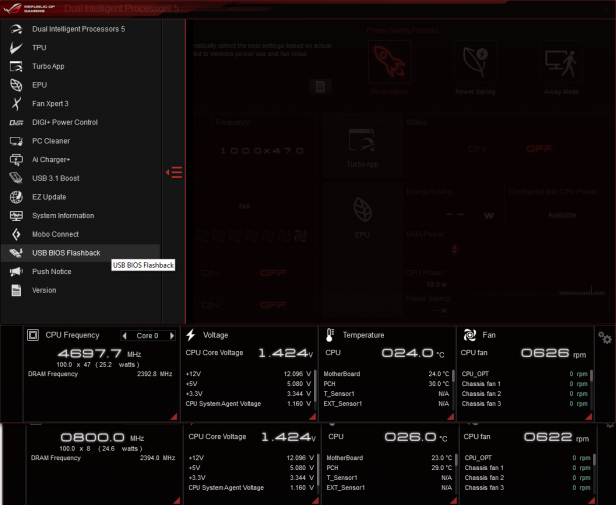
The principal utility is the AI Suite, which brings together the TPU and EPU tools as well every bit links to the rest of the Asus utilities. There's a fan control, BIOS flashing utility, software update tool, and much more.
Asus Maximus 8 Hero – Performance and Overclocking
Using the EZtuner software, which works in conjunction with the TPU, I was impressed at how good an overclock this board achieved all by itself. Information technology hit an boilerplate of 4.6GHz, with a multiplier of either 45 or 46 for each core; a base clock of 100MHz; and voltage of ane.378. Given that 4.6GHz is a decent overclock for a 6600K, with some struggling to even hit that mark, this is pretty impressive for what Asus no doubt considers a rubber overclock.
Reverting to manual overclocking I was quickly able to hit four.7GHz, although struggled to get much farther. As such, were I using this board long-term, I'd almost be inclined to just burn down upwardly EZtuner and permit information technology do its affair.
When information technology comes to performance, I've had to use a unlike set of components to test this motherboard compared to previous Z170 motherboards, then some results aren't directly comparable. Specifically, the demand to bandy from a GTX 980 Ti to an R9 290X ways graphics scores and overall system power consumption are affected.
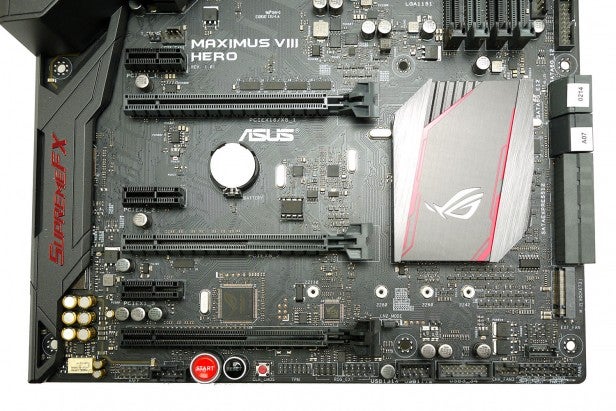
Nonetheless, the crucial numbers are comparable – those being overall CPU performance at default and overclocked speeds, and the actual overclocked CPU speed.
To that end, this board managed to score 653cb in the Cinebench multi-core test at its default speed, which compares to 659cb for the Asus Z170-A and Gigabyte Z170X-Gaming 7. During that examination the whole system consumed 106W, while under a full gaming load information technology chewed through 335W. While idling it used 45W.
At our maximum overclock of 4.7GHz those figures rose to 49W idle, 152W during Cinebench and 355W during the graphics test. Withal, showing just how trivial bear on motherboard-based (i.east. CPU) overclocking can have on gaming, I recorded exactly the same gaming scores at this higher clock speed (113.7fps in Battlefield 4 and ten,086 points in 3DMark: Burn Strike).
Nonetheless, where you do benefit is in CPU performance: the Cinebench score jumped from 653cb to 754cb – that'south a solid xv% increment. With it generally beingness ever more difficult to become a decent, worthwhile overclock from a CPU these days, a 15% boost isn't to exist sniffed at.
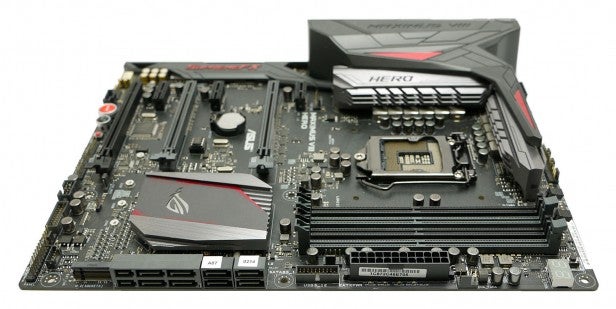
Should I buy the Asus Maximus Eight Hero?
The Asus Maximus Eight Hero is at the upper finish of the Z170 motherboard toll scale. Still, for the sake of £50 or so, it's a skilful investment over more entry-level models. Information technology looks keen, overclocks well and has a good balance of quality features.
Whether it'south the onboard power and reset switches, the first-class fan-control system or the step-up onboard sound – just about everything that's included is useful and very capable, with nary a gimmick in sight.
There are boards out there that pack in even more features and eek out fifty-fifty greater performance – there's a reason the Asus Maximus VIII Farthermost costs more than than £300 – and it is possible to get close to the same characteristic set for less money. Nonetheless, no other board seems to offering the perfect remainder of the Asus Maximus VIII Hero.
Verdict
The Asus Maximus VIII Hero may not offering the best bang for buck, or accept a standout feature that makes it a must-have. However, what information technology does have is a superb balance of features and performance, wrapped up in a design that looks and functions brilliantly.
Trusted Score
Source: https://www.trustedreviews.com/reviews/asus-maximus-viii-hero-performance-and-verdict-page-2
0 Response to "Asustek Computer Inc Maximus Vii Hero Review - Performance"
Post a Comment